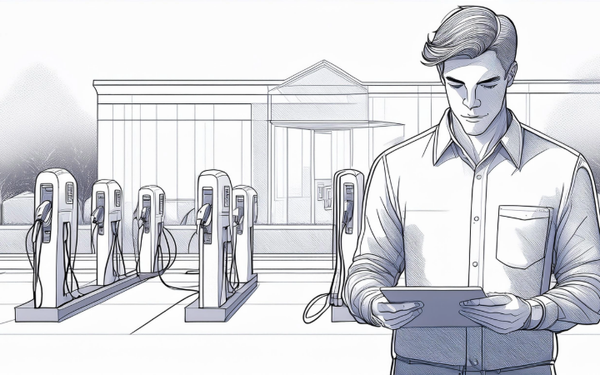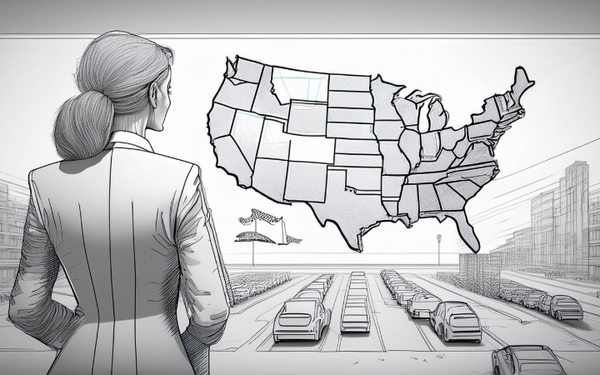The UK's EV Charging Infrastructure: Progress and Future Predictions
The UK has an ambitious goal of banning the sale of new petrol and diesel cars by 2030, transitioning towards a greener and more sustainable transportation future. This article takes a look at the UKs progress in that.

The United Kingdom is making significant strides in building electric vehicle (EV) charging infrastructure to support the growing number of electric vehicles on its roads. This progress is crucial as the UK aims to achieve its ambitious goal of banning the sale of new petrol and diesel cars by 2030, transitioning towards a greener and more sustainable transportation future. This article explores the current state of EV charging infrastructure in the UK, compares it to the number of EVs, and offers predictions for the future.
Current State of EV Charging Infrastructure
As of 2023, the UK has over 40,000 public EV charging points across approximately 15,000 locations. This includes a mix of slow, fast, and rapid chargers, catering to different charging needs. The number of public chargers has been growing steadily, supported by both government initiatives and private investments.
Government Initiatives:
- The UK government has committed significant funding to expand EV charging infrastructure. In March 2022, it announced a £1.6 billion investment under the Electric Vehicle Infrastructure Strategy, aiming to ensure that everyone in the UK is within 30 miles of a rapid charger by 2030 (IEA).
- The On-Street Residential Chargepoint Scheme (ORCS) supports local authorities in installing residential charge points, addressing the needs of EV owners without off-street parking (Statzon - Market Insight Platform).
Private Sector Involvement:
- Companies like BP Pulse, Shell Recharge, and Gridserve are actively expanding their charging networks. Gridserve, for example, opened the UK's first all-electric forecourt in Braintree, Essex, in 2020 and plans to build over 100 similar sites (McKinsey & Company).
Comparing EV Charging Infrastructure to EV Numbers
The UK's EV market has seen rapid growth, with over 740,000 battery electric vehicles (BEVs) registered by the end of 2022. This represents a significant increase from previous years, driven by consumer demand, improved vehicle range, and government incentives (ZapMap).
Charger-to-EV Ratio:
- Despite the progress in infrastructure, the charger-to-EV ratio remains a concern. As of early 2023, there are approximately 55 EVs per public charging point. Industry experts suggest that a more optimal ratio would be around 20 EVs per charger to prevent congestion and ensure accessibility .
Regional Disparities:
- There are notable disparities in charger availability across different regions. London and the South East have the highest number of charging points, while rural areas and some parts of the North have fewer chargers, highlighting the need for more evenly distributed infrastructure .
Predictions for the Future
Expansion and Improvement:
- The UK's EV charging network is expected to expand significantly in the coming years. The government’s target is to have at least 300,000 public chargers by 2030, which would bring the charger-to-EV ratio closer to the recommended levels (IEA).
- Technological advancements are likely to improve the efficiency and convenience of charging. This includes the development of ultra-rapid chargers capable of providing significant range in just a few minutes, and smart charging solutions that optimize energy use and reduce strain on the grid .
Integration with Renewable Energy:
- Integrating EV charging with renewable energy sources is a key focus. Innovations such as vehicle-to-grid (V2G) technology, which allows EVs to feed electricity back to the grid, will play a crucial role in balancing energy supply and demand .
Public and Private Collaboration:
- Continued collaboration between the public and private sectors will be essential. Incentives for private companies to build and maintain charging infrastructure, along with supportive policies and regulations, will drive the expansion needed to meet future demand.
Consumer Adoption and Behavior:
- As charging infrastructure becomes more ubiquitous and reliable, consumer confidence in EVs will grow. This, coupled with the declining cost of EVs and improvements in battery technology, will likely lead to even higher adoption rates.
Conclusion
The United Kingdom is making commendable progress in building its EV charging infrastructure, but challenges remain in terms of ensuring equitable access and keeping pace with the growing number of electric vehicles. With continued investment, technological innovation, and strategic planning, the UK is well on its way to achieving a robust and comprehensive charging network by 2030. This will not only support the transition to electric vehicles but also contribute significantly to the country’s broader environmental and sustainability goals.
For more detailed information, you can refer to:





